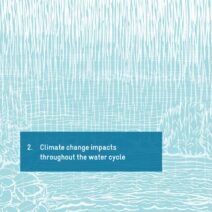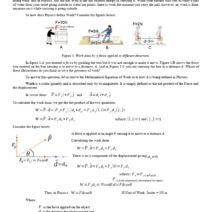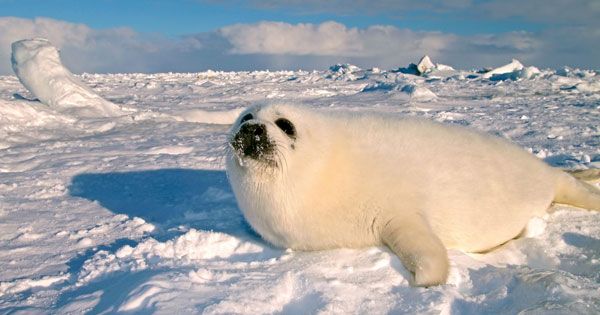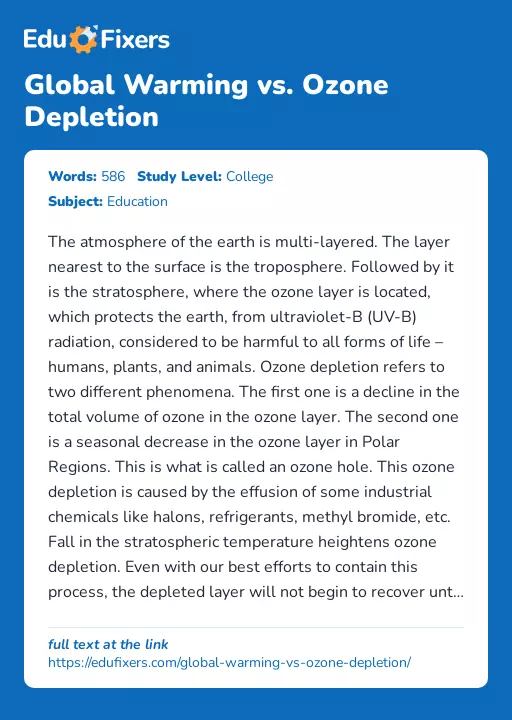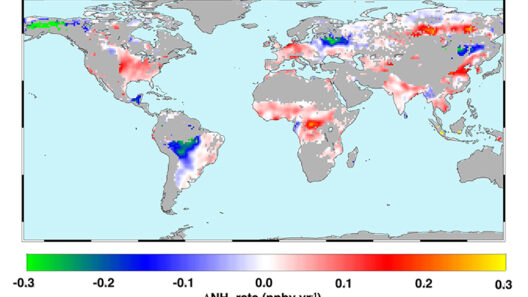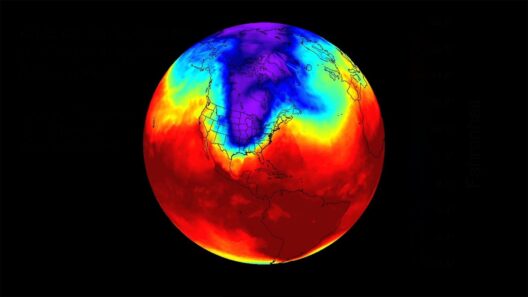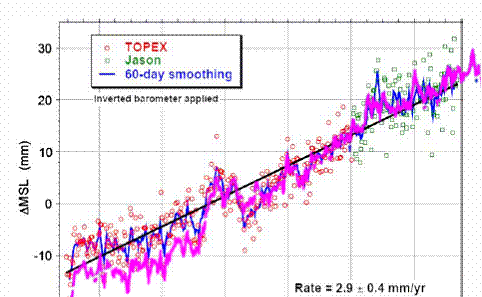In the frigid embrace of the Arctic, harp seals (Pagophilus groenlandicus) have long thrived amidst the expansive ice floes that characterize their habitat. These marine mammals, recognizable by their stunning spotted coats and unique vocalizations, depend heavily on sea ice for breeding, giving birth, and rearing their pups. However, the alarming acceleration of climate change is leading to dramatic alterations in their environment, marking a perilous chapter in the life of harp seals.
The plight of harp seals cannot be understood without a thorough examination of their physiological and behavioral adaptations to icy waters. These pinnipeds are exquisite swimmers, capable of diving to remarkable depths in search of their primary food sources: fish and invertebrates. The ice serves as a crucial platform for nursing mothers, where they can safely give birth to pups in the springtime. Such maternal care is vital, as newborn seals are born with little fat and depend on their mothers for nourishment and warmth in the initial weeks of life.
As global temperatures rise, sea ice is disappearing at an unprecedented rate, creating a cascade of challenges for these remarkable creatures. The crucial breeding habitat for pups is dwindling, forcing mothers to either abandon their offspring or attempt to nurse them under increasingly precarious conditions. This environmental shift leads to elevated mortality rates among pups, as they are particularly vulnerable without the insulating benefits of ice. The survival of these young seals is inextricably linked to stable, healthy ice cover, prompting concerns about the future viability of harp seal populations.
Additionally, the melting ice significantly disrupts the food chain. With alterations in sea ice distribution, the dynamics of marine ecosystems are shifting as well. Harp seals rely on the availability of certain prey species, many of which are also affected by changing ocean conditions. As the marine food web becomes increasingly unbalanced, the availability of fish and prey diminishes, compounding the challenges harp seals face in finding adequate nourishment.
Another aspect of the environmental crisis impacting harp seals is the phenomenon of ocean acidification. Increased carbon dioxide emissions lead to higher acid levels in ocean waters, presenting another significant obstacle to marine life. This change can directly impact the populations of crustaceans and other small marine organisms that are essential to the diets of harp seals. As these foundational components of the marine ecosystem decline, harp seals will be forced to adapt to a dramatically altered food source landscape.
The repercussions extend beyond dietary concerns. Increasing water temperatures and altered salinity levels can affect the health of the seals themselves. Harp seals are sensitive to these changes, as their physiological adaptations have evolved under stable conditions in the Arctic environment. Persistent stress caused by unsuitable conditions can weaken immune systems and make these animals more susceptible to disease and infection.
Moreover, the ramifications of melting ice are not confined exclusively to harp seals. The ecological stability of entire Arctic ecosystems is at stake, leading to cascading effects that can be felt well beyond the polar regions. As apex predators, harp seals play a vital role in maintaining the health of the marine ecosystem. Their decline may disrupt the intricate interdependencies of species, ultimately resulting in unpredictable outcomes that affect biodiversity across the globe.
The practical implications of melting ice go further. The socio-economic ramifications for indigenous communities, who rely on marine mammal populations for traditional hunting practices, are severe. As harp seals and their prey diminish due to climate change, cultural practices and livelihoods are jeopardized, adding an urgent human dimension to an environmental crisis. The need for effective conservation strategies is imperative, not only to sustain harp seals but also to support the diverse cultural tapestry woven by these communities.
Efforts to address the declining harp seal populations involve a spectrum of conservation initiatives. Governments, environmental organizations, and local communities are working collaboratively to establish sustainable practices that prioritize the health of marine ecosystems. Strategies may include developing marine protected areas, implementing stricter fishing regulations, and promoting awareness about the impact of climate change on Arctic wildlife.
Education and outreach are crucial components in the fight against climate change. By fostering a deeper understanding of the interconnectedness of species and the environment, it is possible to inspire collective action. Public awareness campaigns can galvanize support for policy reforms and encourage individual efforts to reduce carbon footprints, ultimately contributing to a healthier planet.
The plight of harp seals should serve as a clarion call for action. As stewards of the environment, it is imperative to advocate for policies that address climate change and safeguard vulnerable species. The narrative of harp seals is not merely one of struggle amidst the melting ice; it is a narrative entwined with the larger battle for environmental justice. Every action taken can contribute to a more sustainable future where nature and humanity coexist harmoniously, fostering resilience in our planet’s ecosystems.
In conclusion, the challenges faced by harp seals amidst the backdrop of melting ice exemplify a broader environmental crisis that threatens the delicate balance of marine ecosystems. Through concerted efforts that encompass scientific research, community engagement, and policy advocacy, there remains a glimmer of hope for restoring stability to the habitats that these seals and countless other species call home. A united front is essential; the fight for the harp seals is ultimately a fight for the health of the oceans and, by extension, the planet itself.
